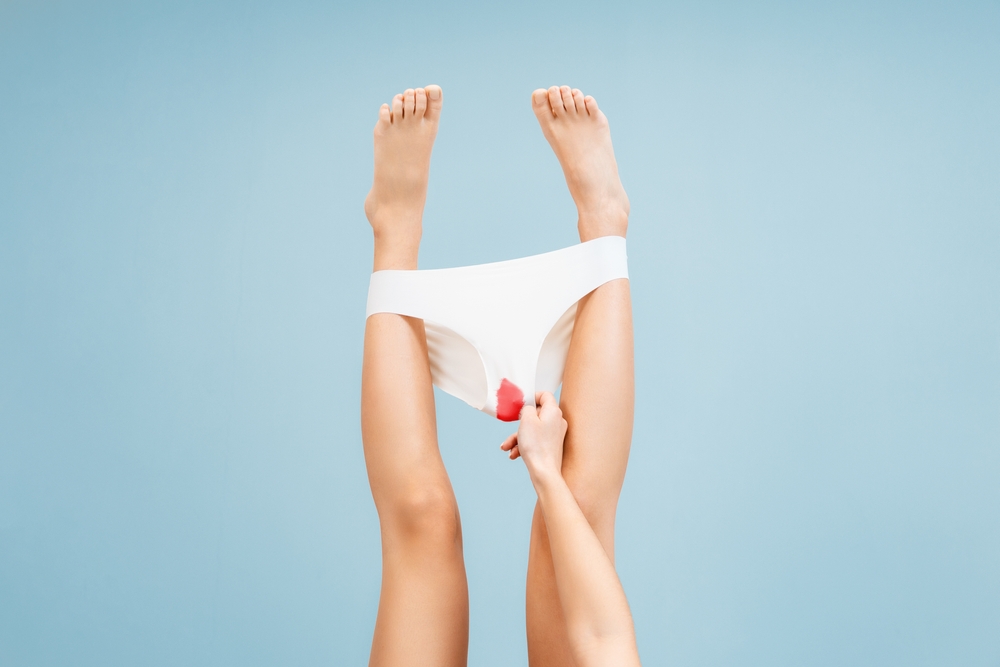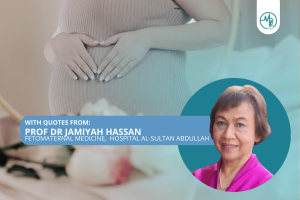A Ground-breaking Study Puts Menstrual Products to the Test—With Real Blood
In an unprecedented move, researchers have tested menstrual products using expired human packed red blood cells, providing a closer approximation to actual menstrual blood than the saline solutions traditionally used.
This marks a critical milestone in menstrual health research, shedding light on the surprising capacities of various menstrual products.
Breaking the Saline Tradition
Historically, the evaluation of menstrual products has predominantly employed water or saline solutions as testing fluids. This approach, however, has been scrutinised due to the substantial differences between these fluids and actual menstrual blood in terms of viscosity, composition, and other properties.
Such differences may affect the performance of menstrual products under real-world conditions, thereby potentially leading to inaccurate capacity measurements.
In a groundbreaking study led by Dr. Bethany Samuelson Bannow, a notable shift from this tradition was observed, wherein actual human blood was utilised as the testing fluid to bridge the aforementioned gap. This innovative approach aimed to provide a more realistic and accurate representation of the capacity of menstrual products.
In the study conducted by Dr. Samuelson Bannow and her team, menstrual discs were found to have an average capacity of 61 mL when tested with real blood. Remarkably, one specific brand of menstrual disc exhibited a capacity to hold as much as 80 mL of blood under these testing conditions.
These findings, as reported by Dr. Samuelson Bannow and colleagues, highlight the potential for significant improvements in menstrual product testing methodologies. The use of real blood in these tests, as opposed to water or saline solutions, may indeed offer a more precise and reliable measure of product capacity, and could thereby inform better product development and consumer choices.
Why has it taken so long for such a study to be conducted? One answer may lie in the persistent societal taboos around menstruation that pervade even scientific research, limiting our understanding of menstrual health.
Heavy Menstrual Bleeding: A Widespread Issue
Heavy menstrual bleeding, medically referred to as menorrhagia, is a condition that affects a significant portion of menstruating individuals. Menorrhagia is a condition in which a woman’s menstrual periods are excessively heavy, prolonged, or both. It is often defined as heavy bleeding as lasting more than seven days, or soaking through one or more tampons or pads every hour for several consecutive hours.
Studies have estimated that menorrhagia affects up to one-third of menstruating individuals globally. Despite its high prevalence, it is a condition that has historically received relatively limited attention in medical research.
This is particularly true in Asian populations, where cultural sensitivities can make discussions about menstrual health more challenging.
Cultural Sensitivity and Research Gaps
In many cultures, menstruation is considered a private and sensitive matter, and open discussions about menstrual health are frequently avoided. This cultural norm, coupled with societal taboos surrounding menstruation, may significantly contribute to the gaps in research.
For example, studies have demonstrated that individuals in certain countries are less likely to seek medical advice for menorrhagia due to cultural stigma associated with menstruation, limited awareness of the condition, and inadequate access to healthcare services.
Additionally, lack of access to menstrual hygiene products is a widespread issue, exacerbating the challenges faced by individuals that menstruate. In some low- and middle-income countries, the cost and scarcity of sanitary products forces individuals to use less hygienic alternatives, which may lead to health complications such as infections.
The Implications of the Pink Tax
The “pink tax” refers to the additional cost that individuals often pay for products and services marketed towards women. This form of gender-based pricing discrimination affects a wide range of people, including cisgender women, transgender men, non-binary, and gender-nonconforming individuals. These additional costs can be seen in various products and services, from personal care items to clothing, and highlight the financial burden placed on individuals due to societal gender norms and expectations.
The economic burden observed in various countries limits access to essential health products for many people, especially those in lower socio-economic groups.
Furthermore, the cultural taboos surrounding menstruation in many parts of the world can result in feelings of shame and embarrassment. These feelings may prevent individuals from seeking medical help for conditions like menorrhagia. This, in turn, may limit the quantity and quality of data available for research on menstrual disorders in these populations.
Addressing these complex and interrelated factors requires a multidimensional approach. This involves cultural, educational, and policy changes aimed at improving access to menstrual health services and products and reducing the stigma associated with menstruation.
The Challenge of Recognising Heavy Bleeding and the Cost-Sustainability Balance of Menstrual Products
The use of menstrual cups or discs, which are effective at containing menstrual flow, may inadvertently lead to an under-recognition of menorrhagia.
Since menstrual discs and cups can hold substantial volumes of blood, individuals may not realise the extent of their blood loss when using these products. This lack of awareness could potentially delay crucial medical consultations and treatment for conditions like menorrhagia, which can have significant health implications if left unaddressed.
At the same time, menstrual cups and discs present a compelling balance of cost and sustainability.
Generally ranging from $25 to $35, these reusable products often represent a more affordable and environmentally friendly option in the long run compared to disposable products. Not only can this lower the long-term financial burden for individuals, but it also reduces the amount of waste associated with menstrual hygiene, as cups and discs can be reused for several years.
However, the upfront cost of these reusable products can be a barrier for some, particularly those in lower-income brackets. Addressing this issue may involve policy changes or subsidies to make these products more accessible to a broader population.
Advocacy for a Shift in Approach
There is an urgent need to shift the approach to menstrual health. Central to this call is creating better metrics to diagnose menorrhagia, independent of traditional products like pads and tampons. Advocates demand open discussions about menstruation in medical settings and broader society. Despite being a natural, common process, menstruation remains taboo in many parts of the world.
This stigma can deter people from seeking medical care for menstrual disorders and impede research progress.
It is time for a pivotal change.
Advocates urge healthcare professionals to prioritise and destigmatise menstrual health, emphasising the need for rigorous, realistic testing methods.
References
- DeLoughery, E., Colwill, A. C., Edelman, A., & Samuelson Bannow, B. (2023, August 7). Red blood cell capacity of modern menstrual products: considerations for assessing heavy menstrual bleeding. BMJ Sexual & Reproductive Health, bmjsrh-2023. https://doi.org/10.1136/bmjsrh-2023-201895
- Menstrual hygiene management among adolescent girls in India: a systematic review and meta-analysis – PubMed. (2016, March 2). PubMed. https://doi.org/10.1136/bmjopen-2015-010290
- Preclinical, clinical, and over-the-counter postmarketing experience with a new vaginal cup: menstrual collection – PubMed. (2011, February 1). PubMed. https://doi.org/10.1089/jwh.2009.1929
- Johnston-Robledo, I., & Chrisler, J. C. (2020, July 25). The Menstrual Mark: Menstruation as Social Stigma – The Palgrave Handbook of Critical Menstruation Studies – NCBI Bookshelf. The Menstrual Mark: Menstruation as Social Stigma – the Palgrave Handbook of Critical Menstruation Studies – NCBI Bookshelf. https://doi.org/10.1007/978-981-15-0614-7_17
- Menstrual knowledge and practices of female adolescents in urban Karachi, Pakistan – PubMed. (2010, August 1). PubMed. https://doi.org/10.1016/j.adolescence.2009.05.013
- Sommer, M., & Sahin, M. (2013, September 1). Overcoming the Taboo: Advancing the Global Agenda for Menstrual Hygiene Management for Schoolgirls. PubMed Central (PMC). https://doi.org/10.2105/AJPH.2013.301374
- Unmet Menstrual Hygiene Needs Among Low-Income Women – PubMed. (2019, February 1). PubMed. https://doi.org/10.1097/AOG.0000000000003060
- Menstrual cup use, leakage, acceptability, safety, and availability: a systematic review and meta-analysis – PubMed. (2019, August 1). PubMed. https://doi.org/10.1016/S2468-2667(19)30111-2













